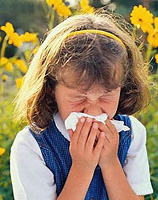Allergic gastroenteritis or food allergies can cause almost any food product: cow's milk, eggs, fish, crustaceans, food cereals, vegetables, fruits, berries (especially strawberries and citrus), nuts, chocolate DR.
Content
Allergic Gastroenteritis (Food Allergy) — Intestinal disease caused by allergens of food origin. Manifests intestinal symptoms (abdominal pain, diarrhea, etc.) and extraordinary, in the form of allergic diseases of the respiratory organs (rhinitis, bronchial asthma), allergic otitis, difficult urination, joint pain and muscles. Ate carrots – I slept, itching appeared in the nose, drove tears streams, blushed eyes. Skin can also be amazed, edema appears, redness, itching. Hives – The most typical example of such a reaction: the skin suddenly covered by blisters like nettle burn.
From a medical point of view, under allergies, the increased sensitivity of the body to certain environmental substances that affect us through the immune system. Such allergies are hereditaryly determined, the readiness for it is already laid in the newborn. With the primary penetration of allergen in the body, the reaction is almost never manifested, but in the case of repeated contacts it will be necessary.
Allergy to the proteins of cow's milk
Allergens – These are substances that run the reaction. The first allergens with whom the person still faces in infancy is food: cow milk, chicken eggs, poultry meat.
 Allergies to proteins of cow milk arises usually in children of the first 4 months of life receiving artificial feeding. However, sometimes allergies to milk proteins can develop in adolescents or adults. The causes of the painful reaction of the body on food products may not always be associated with immune disorders and food allergies. More often they are caused by sharp seasonings in cooked dishes, toxins or pharmacological means contained in food products. For example, coffee contains a lot of caffeine. Food intolerance may be due to enzyme failure or modified intestinal microbial phloom. The possibility of allergic reactions to a large extent depends on the state of the protective barrier of the mucous membrane of the small intestine (the presence of secretory immunoglobulins and lymphoid tissue in it). The state of the immune system in persons predisposed to food allergies is crucial.
Allergies to proteins of cow milk arises usually in children of the first 4 months of life receiving artificial feeding. However, sometimes allergies to milk proteins can develop in adolescents or adults. The causes of the painful reaction of the body on food products may not always be associated with immune disorders and food allergies. More often they are caused by sharp seasonings in cooked dishes, toxins or pharmacological means contained in food products. For example, coffee contains a lot of caffeine. Food intolerance may be due to enzyme failure or modified intestinal microbial phloom. The possibility of allergic reactions to a large extent depends on the state of the protective barrier of the mucous membrane of the small intestine (the presence of secretory immunoglobulins and lymphoid tissue in it). The state of the immune system in persons predisposed to food allergies is crucial.
However, allergic reactions can develop on the most seemingly non-allergenic products – Sausages, sausages, pastry. These so-called integrated products include, albeit in small quantities, other food ingredients. So, in the recipe by all the favorite cakes there are flour, peanuts, hazelnuts, eggs, milk, as well as various dyes and flavors. If, let's say, a person does not tolerate an egg whitelle, then a piece of cake will cause Herried.
Thanks to the relatives of allergens, food and non-splashing can cause the so-called cross-allergy. Very often, pollen allergies (pollinosis) precede the intolerance of vegetables and fruits: so, allergic reactions to carrots and a cherry «give recycling» With Dusty Birch. The same cross reactions are for drugs, animal wool.
Allergic process can affect any organ, any body system. In addition, the nature of the lesions depends on the age of person and on the time of the appearance of an allergic reaction. For example, the so-called immediate reactions occur within a few seconds to six-eight hours, and slow – 12–24 hours after meals.
Of all the allergic reactions to food the most dangerous – Collapse, shock that happens in people highly sensitive to certain products. Cases of anaphylactic shock in children are described when after taking milk, eggs, strawberries, seafood, shortness of breath, urticaria, swelling of quinqu, vomiting, damaged blood pressure and heart stops.
To prevent the occurrence of heavy allergic reactions to food, you need to adhere to the principle: it is better to prevent than to treat. The easiest and most reliable way is a dangerous product to exclude from the diet.
Allergic food reactions
How to explain the fact that the number of allergic food reactions is growing with each decade? Would we become more in contact with food allergens?
Steel, and from the earliest and much more intense! In favor of such an approval, you can give good arguments. For example, in recent years, the duration of breastfeeding has significantly decreased – Young mothers stop feeding babies with breasts, as a rule, to the third–The fourth month of life. Children are early transferred to artificial nutrition, it is too injured (cereal, vegetable and fruit puree). However, the stomach of the infants is completely not prepared for the reception of such complex food: there are not enough enzymes to split proteins, the immune system does not work in full force – And problems begin.
In recent years, the food culture has changed. Like each table you can find exotic fruits, seafood, spices and seasonings. We began to eat better and more diverse, and it is only possible to wonder that from all the abundance of products only a few cause allergies. Meanwhile, the composition and activity of digestive enzymes from a Russian person are designed for products of their zone. And the fact that it does not fit into it, delivers a lot of trouble in the form of various skin manifestations of allergies and allergic diseases of the respiratory organs.
Manifestations of allergic gastroenteritis
 Food allergies leads to significant disorders of intestinal digestion. Manifestations of allergies to milk are most well studied. They vary from easy runny nose to diarrhea, vomiting, pain in the abdomen, intestinal spasms, asthma, dermatitis, urticaria, and even in rare cases of anaphylactic shock. The most common symptoms of dysfunction of digestive organs (diarrhea, vomiting, abdominal pain, intestinal spasms), then change from the respiratory organs (runny nose) and skin, significantly less often arise symptoms of changes in other organs.
Food allergies leads to significant disorders of intestinal digestion. Manifestations of allergies to milk are most well studied. They vary from easy runny nose to diarrhea, vomiting, pain in the abdomen, intestinal spasms, asthma, dermatitis, urticaria, and even in rare cases of anaphylactic shock. The most common symptoms of dysfunction of digestive organs (diarrhea, vomiting, abdominal pain, intestinal spasms), then change from the respiratory organs (runny nose) and skin, significantly less often arise symptoms of changes in other organs.
Allergy to the proteins of cow milk prevails among the infants of the first year of life and disappears quickly in the future.
Manifestations of food allergies may occur on other animals and vegetable proteins (eggs, fish, nuts and t.D.). Most often, food products provoke the appearance of stomatitis (inflammation of the mucous membrane of the mouth) and pharyngitis (inflammation of the mucous membrane of the pharynx), also appear pain in abdominal pain, meteorism (bloating, heaving, driving abdominal pain), stool violation.
Diagnosis of allergic gastroenteritis
The diagnosis is based on a thorough collection «Food» Anamnesis, identification of allergy products. Exception of them from the diet contributes to the disappearance of disease manifestations. To determine the edible allergen, prescribe a simple diet containing rice, lamb, vegetable oil, potatoes, apples. In the absence of symptoms of allergies, in the following days, it is gradually expanding the diet and thus try to identify allergy products. Allergic reactions are characteristic of food allergies: skin rash type of urticaria, stomatitis (inflammation of the mouth mucosa), arthritis (joint joints), etc., as well as eosinophilia. Eosinophila – These are cells found in blood and tissues in healthy people in small quantities, and an increase in the number of eosinophils in the blood (eosinophilia) occurs when allergic.
More accurate diagnostics are based on the production of skin samples with food allergens, the study in the IGE blood, the concentration of which rises in food allergies. In patients with food allergies during the examination of the intestine (biopsy colonoscopy), inflammation of the mucous membrane of the ileum and blind intestine is often detected.
Treatment of allergic gastroenteritis
Treatment of allergic enteropathy includes a diet assignment from which completely food products exclude painful symptoms. In most cases, this is enough. Antihistamines are prescribed to eliminate skin and other manifestations of allergies.
When allergic to proteins of cow milk, treatment is to complete the exclusion of milk and dairy products. Children on artificial feeding, with allergies to proteins of cow milk, usually transport soy milk well, although there are cases of allergies and to it.









